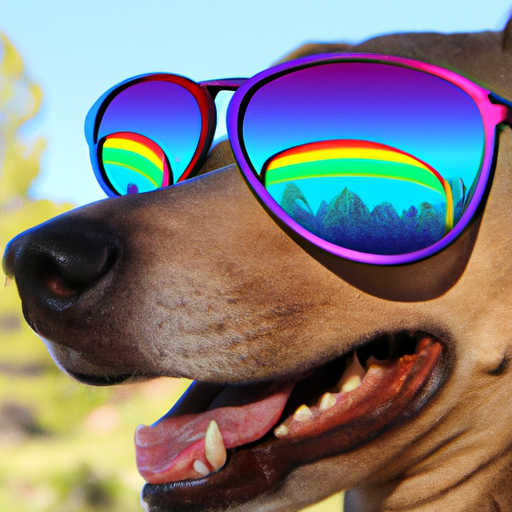As a caregiver, understanding your furry friend’s perception of the world around them can be enlightening. This article will delve into the topic of how dogs perceive color.
H2: The World Through a Dog’s Eyes
First and foremost, you need to know that dogs do not see the world in black and white. This is a common misconception. The truth is, dogs see the world in a variety of colors, albeit different from how we humans do.
- Dogs have dichromatic vision, which means they perceive two primary colors: blue and yellow.
- They struggle to distinguish between red and green.
These differences in color perception are due to the types of color receptors, or cones, present in our eyes versus those in a dog’s eyes.
H2: Comparing Human and Dog Vision
| Vision Aspect | Humans | Dogs |
|---|---|---|
| Color Perception | Trichromatic (Red, Green, Blue) | Dichromatic (Blue, Yellow) |
| Visual Acuity | 20/20 | 20/75 |
| Night Vision | Poor | Excellent |
As you can see in the table above, dogs have less visual acuity than humans. This means that what we see clearly at 75 feet, a dog would need to be 20 feet away to see with the same clarity. However, dogs compensate with superior night vision and motion detection.
H2: How Dogs Use Their Color Vision
While we humans rely heavily on our color vision, dogs use theirs in combination with their extraordinary sense of smell. A dog’s world is not defined by the shades of blue and yellow they see, but rather by the plethora of scents they can detect.
- Dogs use their color vision to differentiate between objects of interest.
- They use their sense of smell to gather detailed information about these objects.
Thus, while color perception is an important part of their vision, it’s not the be-all-end-all of a dog’s perception of its environment.
H2: The Impact of Color on Dog Toys and Training
Knowing that dogs can only perceive blue and yellow, it would make sense to choose toys and training equipment in these colors.
- A blue or yellow toy will stand out more against the green grass of your backyard.
- For indoor training, avoid using red equipment as it can appear dark and blend in with the surroundings.
Understanding these simple facts can make playtime and training more engaging and productive for your four-legged friend.
H2: Frequently Asked Questions (FAQ)
Q: Do dogs see in black and white?
A: No, dogs see in shades of blue and yellow.
Q: Can dogs see in the dark better than humans?
A: Yes, dogs have superior night vision.
Q: What colors should I choose for dog toys and training equipment?
A: Blue and yellow are the best colors as dogs can see these clearly.
Q: Do dogs rely on their color vision as much as humans do?
A: No, dogs rely more heavily on their sense of smell.
By understanding how your dog sees the world, you can better cater to their needs and foster a deeper bond with your furry companion. Remember, the world is not merely a place of sights for a dog, but a symphony of scents waiting to be explored.



